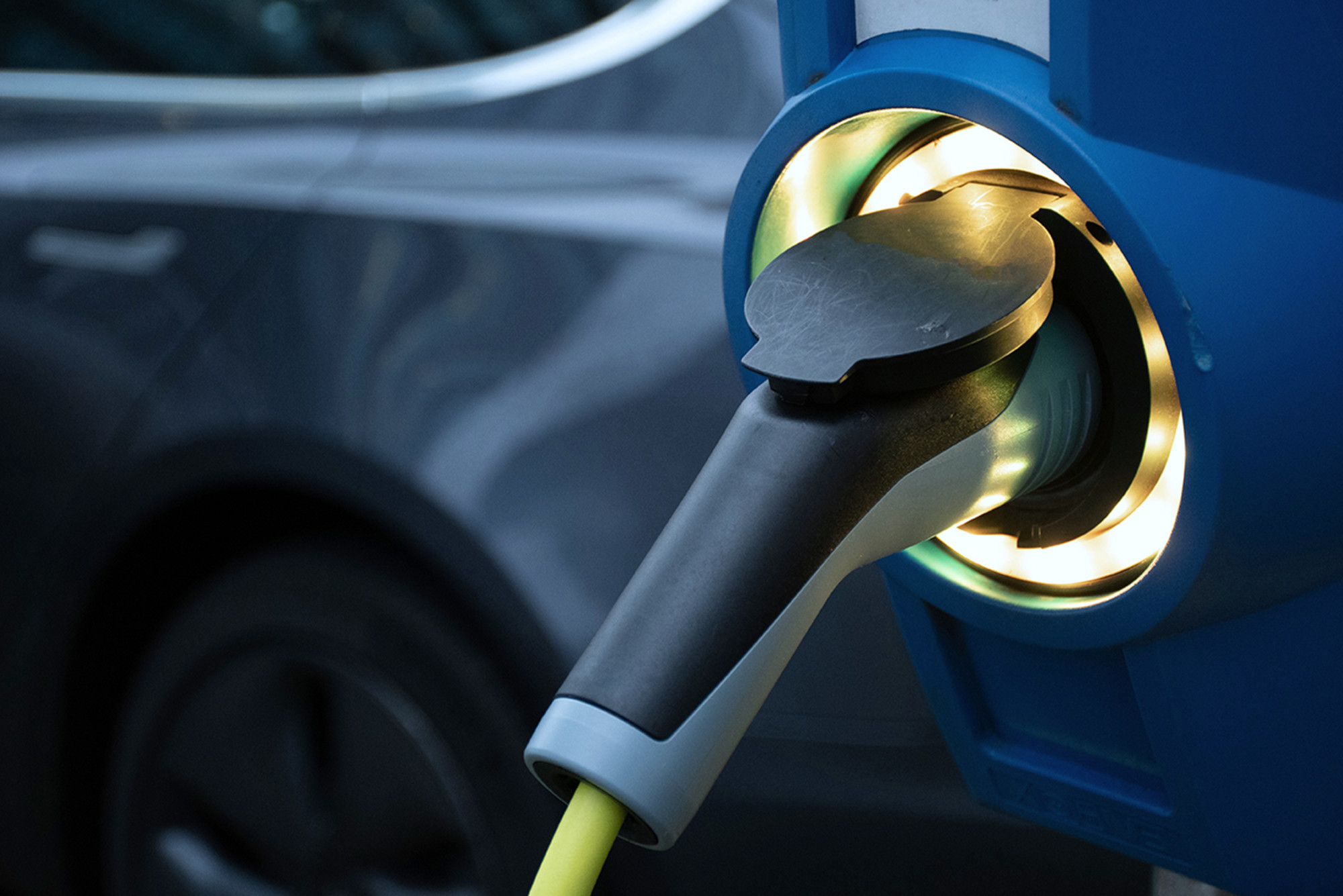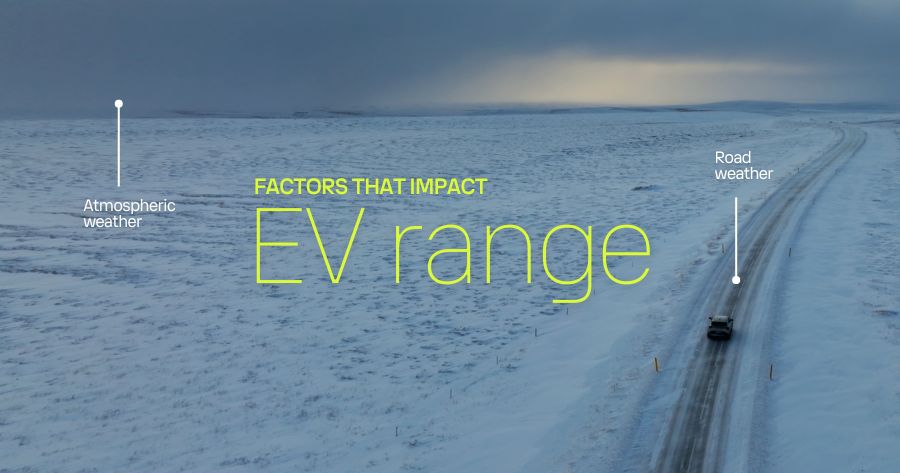
Real-time
data updated every 15 minutes
24-hour
forecast for the route ahead
Precise
weather and road condition parameters

How air and road weather conditions affect EV range
Electric vehicles are a lot like people; they like it when the temperature is just right. Not too hot or cold. EVs are more sensitive to temperature and other environmental factors than cars with an internal combustion engine. An EV may lose up to 40% of its rated range when the air temperature is extremely cold or hot.
The Xweather EV Range dataset provides detailed weather and road conditions data, which EV manufacturers use to optimize vehicle systems, improve efficiency, and predict EV range more accurately.
Xweather goes beyond generic weather data with dedicated atmospheric and road weather parameters for simulating rolling resistance and aerodynamic drag to predict EV range.

Accurate EV range prediction
Enhance the driver experience with accurate, weather-aware EV range prediction that accounts for current conditions and the forecast for the route ahead.
Optimize drivetrain to extend range
Use current and forecasted weather data to enable more efficient thermal management of the power train and battery leading to improved efficiency and range.
Reduce range anxiety
Build driver trust and confidence in the vehicle systems with accurate range prediction. Provide enhanced route planning options that highlight the most efficient routes.

Accurately predicting EV range enhances the driving experience
Xweather EV range parameters

Heating and cooling
Electric vehicles are more sensitive to temperature than petrol-powered cars. Every degree above or below the powertrain's optimal operating temperature reduces an EV's efficiency and available range.
Air temperature
Thermal management systems for the powertrain have to work harder as the air temperature rises or falls. Climate control systems draw more power when the cabin temperature lies outside the driver's comfort zone.
Using weather data to predict range ensures that the initial estimate on start-up is based on the temperature outside rather than the temperature reported by vehicle sensors inside a heated garage or covered car park.
Unlike other weather providers, Xweather delivers air temperature values with one decimal place precision for increased simulation accuracy. With Xweather, you get the air temperature for the current location and a forecast for the route enabling accurate range prediction for longer trips.
Solar radiation
When direct sunlight strikes the windows it warms the cabin and the air conditioning will draw more energy from the battery to keep the cabin cool.



Aerodynamic resistance
Aerodynamic resistance is a critical factor in determining efficiency and performance. EVs are designed to minimize drag, but for accurate range prediction, you must also consider the characteristics of the air.
Wind speed and direction
Higher wind speeds increase the aerodynamic drag on a vehicle, but the wind direction matters: headwinds increase drag, while a tailwind can reduce it. Xweather reports wind speed and direction at 2 meters rather than the 10-meter standard used by other weather providers.
Air pressure
Air pressure increases the density of the air, which increases drag.
Humidity
Humidity decreases the density of the air. Dry air is denser than humid air because nitrogen (80% of air) is denser than water vapor.
Precipitation
Precipitation can increase skin friction drag due to water droplets on the car body disrupting the smooth flow of air over the vehicle.

Rolling resistance
Road weather describes the effect of weather on the state and safety of road surfaces. Road weather influences EV range by affecting the rolling resistance of the vehicle's tires on the pavement.
Water on road
Water on the road makes it harder for the tire to roll, which leads to increased energy consumption to drive the vehicle forward. Xweather reports water film thickness with sub-millimeter level accuracy to enable a precise simulation of rolling resistance along the route.
Snow on road
Snow creates an additional layer between the tires and the pavement. The tires have to work harder to move through the snow, which drains the battery faster. Deeper snow increases the resistance. Xweather provides snow thickness forecasts for roads with sub-millimeter level accuracy.
Road temperature
The temperature of the road surface affects the temperature of the tires. When a tire heats up, the air pressure inside increases, and the rolling resistance decreases. Wet roads can have a cooling effect on the tire, which increases the rolling resistance.

Automotive-grade weather partner
Many of the world's largest automotive brands rely on Vaisala Xweather data to improve safety, efficiency, and comfort for drivers and passengers. Most weather data providers do not provide any road weather parameters. Vaisala built its expertise with almost 90 years of innovation in the weather domain, 40 years of designing road weather sensors, and over 25 years of developing accurate road weather forecasts with road and safety professionals.
Relevant parameters
Xweather delivers precise road and atmospheric weather parameters that impact range prediction and thermal management. Wind speed is calculated at 2 m height, for example, not the 10 m weather-industry standard.
Global coverage
Global coverage for atmospheric weather conditions is complemented by complete spatial and temporal coverage of public paved roads in North America, Europe, Japan, Australia, and New Zealand.
Flexible delivery
Point-based, route query, or batch model delivery for ultimate flexibility with real-time data updated every 15 minutes, a 24-hour road condition forecast, and a 14-day atmospheric weather forecast.
Get started by requesting access to the EV range dataset
Here’s how to access the Xweather EV Range dataset and the benefits of using real-time and forecasted road weather conditions in electric vehicles.
Step 1
Fill in the form with your details to request access.
Step 2
We will reach out to you to set up your access.
Step 3
Get continuous support from early validation to performance testing and on to production.